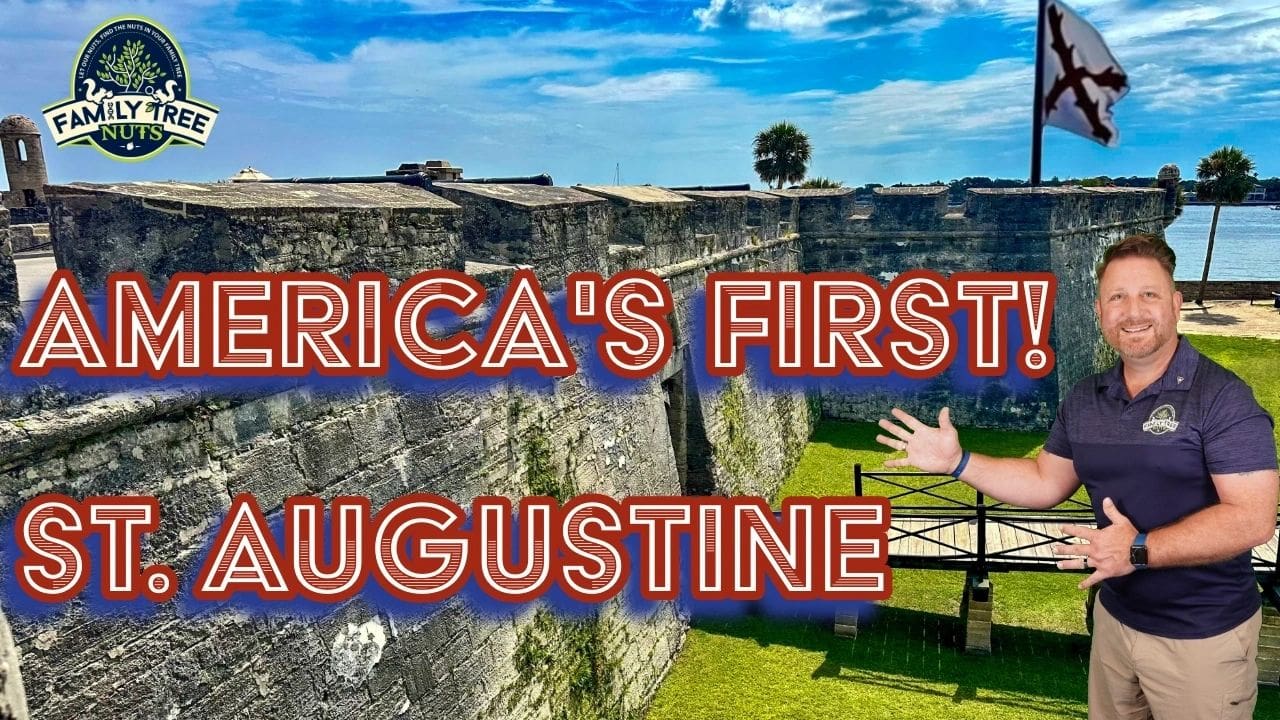
AMERICA’S FIRST! HISTORY OF ST. AUGUSTINE, FLORIDA
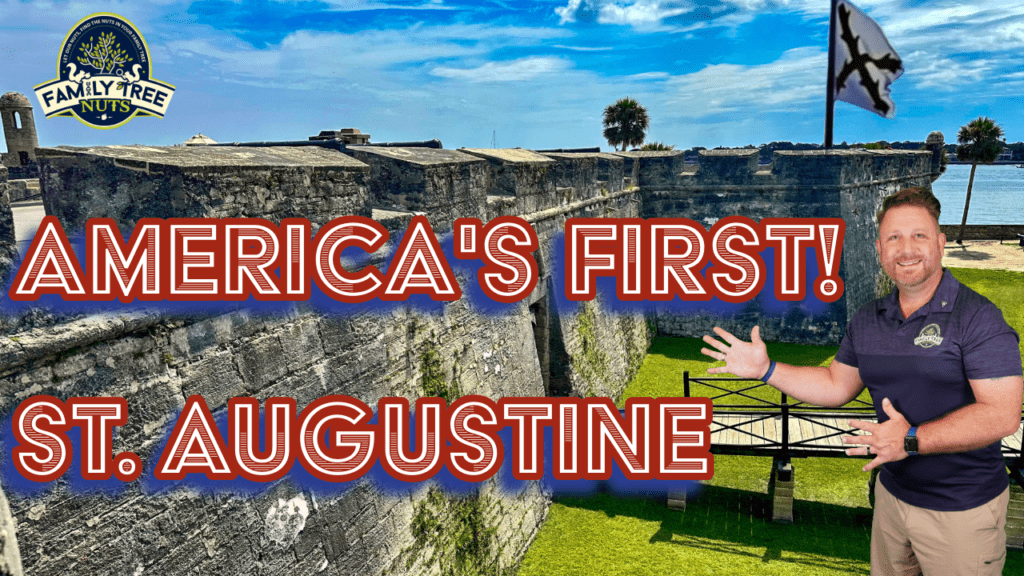
St. Augustine, Florida has long been known as the oldest city in the United States and was established almost four and a half centuries ago. It’s magnificent fort named Castillo de San Marcos has stood for over three and a half centuries and protected the city for through the ages. The flag over the city and fort has changed five times. In this article, I’ll give you a brief run-down of the history of the city and the fort that owns the title of so many firsts.
Recently we visited St. Augustine, Florida, and I wanted to share the history with all of you. At Family Tree Nuts, we build family trees for clients that either don’t know how, don’t have the time, or don’t want to pay those expensive membership fees. We also make history videos all over the United States, and a few countries, so if you like videos like these, be sure to Subscribe to our YouTube channel.
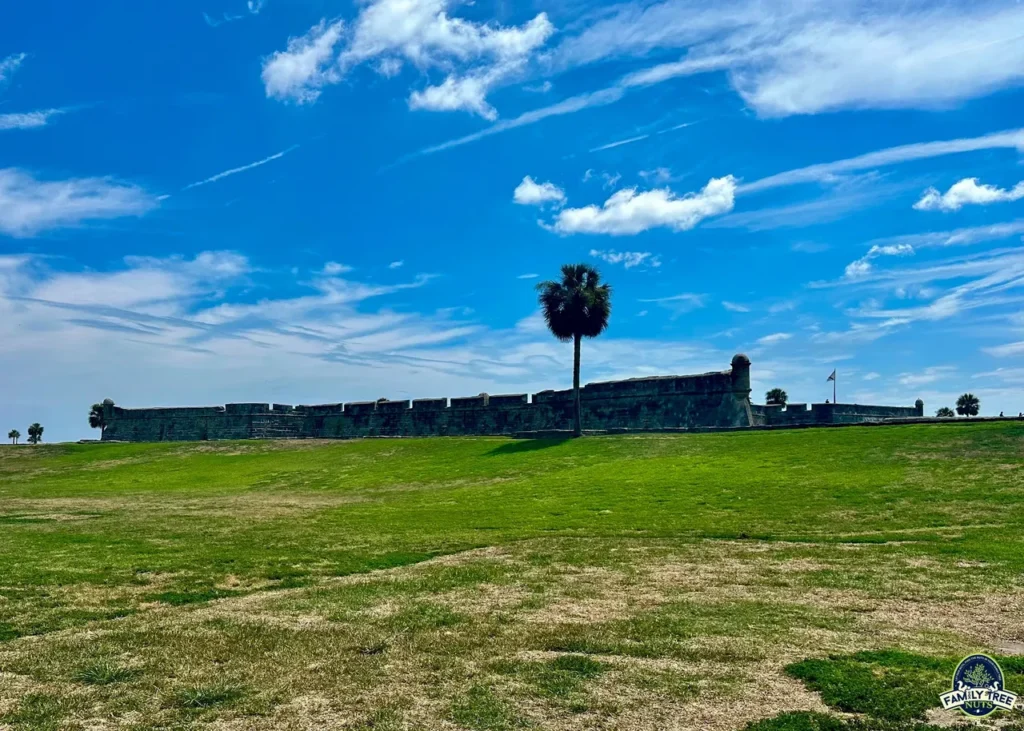
Now back to St. Augustine and the fort. Obviously a city that is four and a half centuries old has a tremendous amount of history, so we will be hitting the main highlights, and many of the details will be about the fort. I had better clear up the cities official title, because I know some people are sticklers with that type of thing. It is officially the oldest continuously occupied European city in the United States and was first settled in the late summer of 1565.
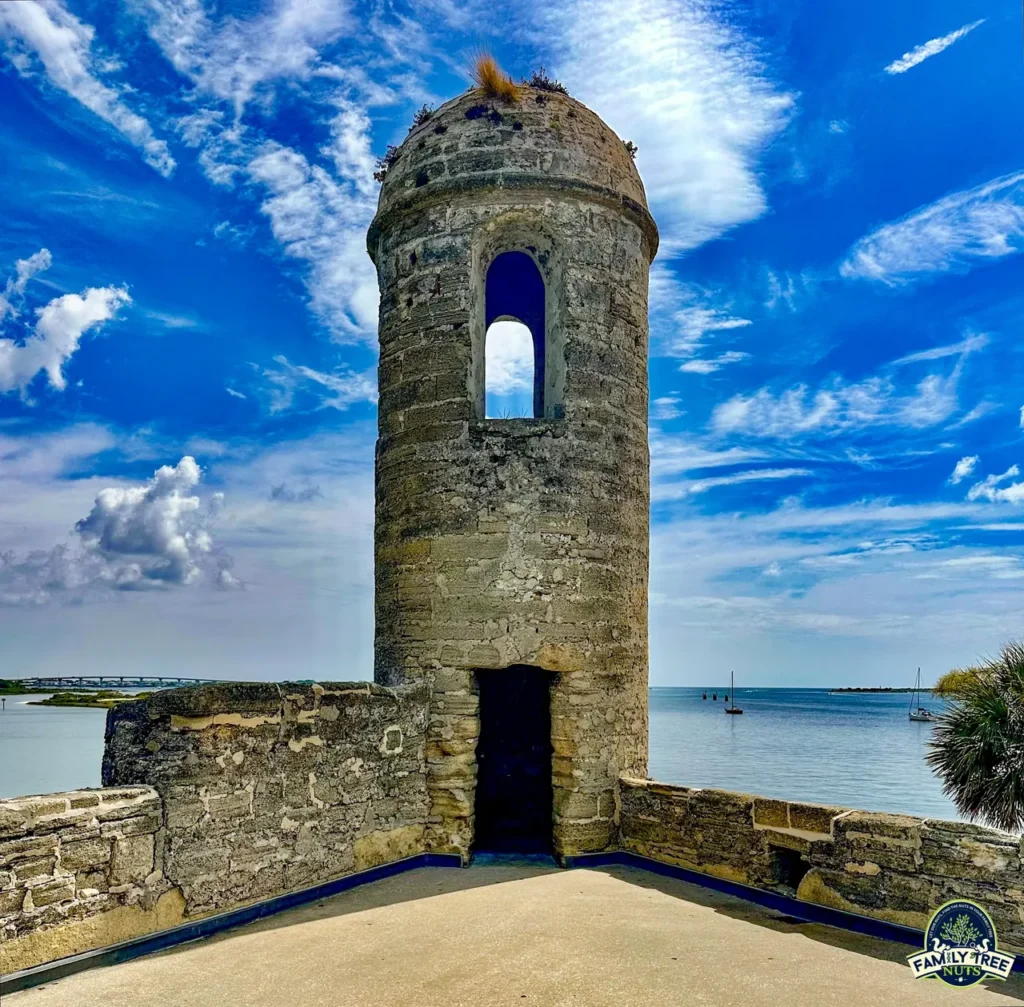
I should also mention that St. Augustine should not be confused with other firsts in the Western Hemisphere. The first settlement in the New World was Santo Domingo, Dominican Republic, which was founded in 1496, sixty-nine years before St. Augustine. Be sure to see our video from Santo Domingo. The Roanoke Colony was established in 1585, twenty years after St. Augustine and was the first English settlement in the New World. Be sure to see our video from Roanoke. Many know about the mysterious disappearance of Roanoke which opens the door for Jamestown, founded in 1607, which holds the title of the oldest continuously occupied English settlement in the New World. I’ve been to Jamestown, but we don’t have a video from there… yet.
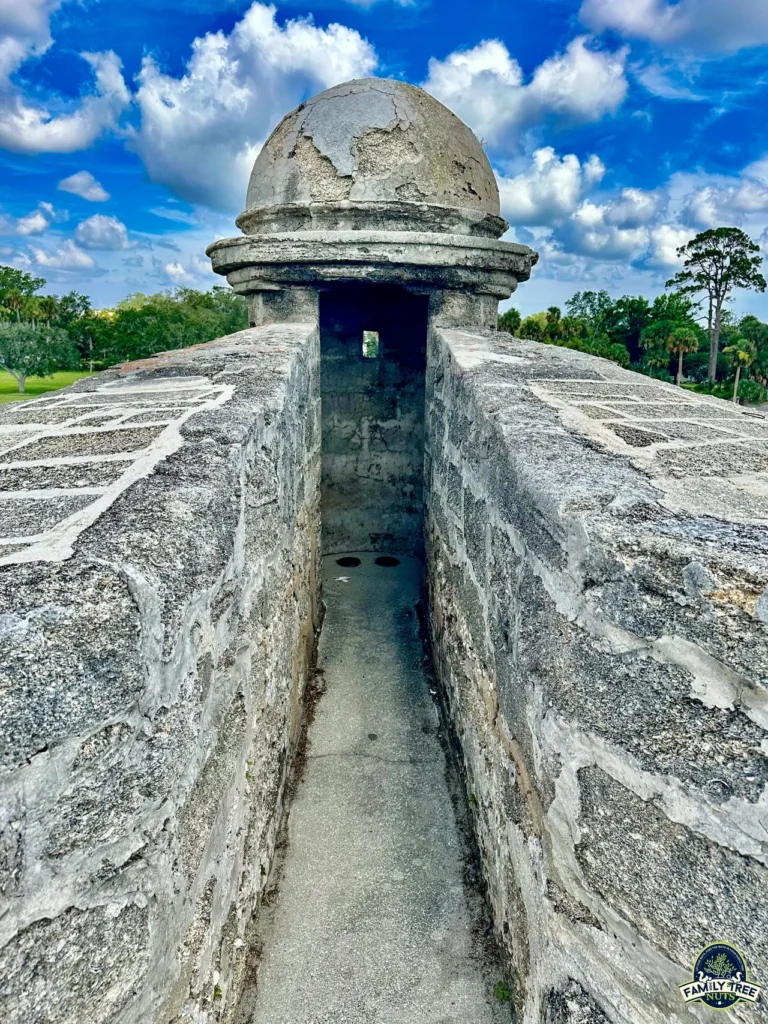
The need for the St. Augustine settlement is tied into the rest of Spanish history in the New World. After Christopher Columbus’ first voyage in 1492, an explosion of exploration took place. In 1513, Juan Ponce de León discovered the Gulf Stream that flowed tightly along the Florida coast and the southern half of the modern-day United States. The control of the Gulf Stream, or at least safe passage in it, was paramount for the success in trade.
As the decades passed more competition arose in the area for control of the rich trade goods. Not only the Spanish, but the British, French and the Dutch were rushing in to create foot holds on territory, as well as take those already claimed by one or the other. In 1565, Spanish Captain General Pedro Menéndez de Avíles was tasked with setting up a colony in Florida where the jet stream was thin and close to the shoreline. They named the settlement St. Augustine because they first saw land in Florida on St. Augustine’s Day, which is August 28th.
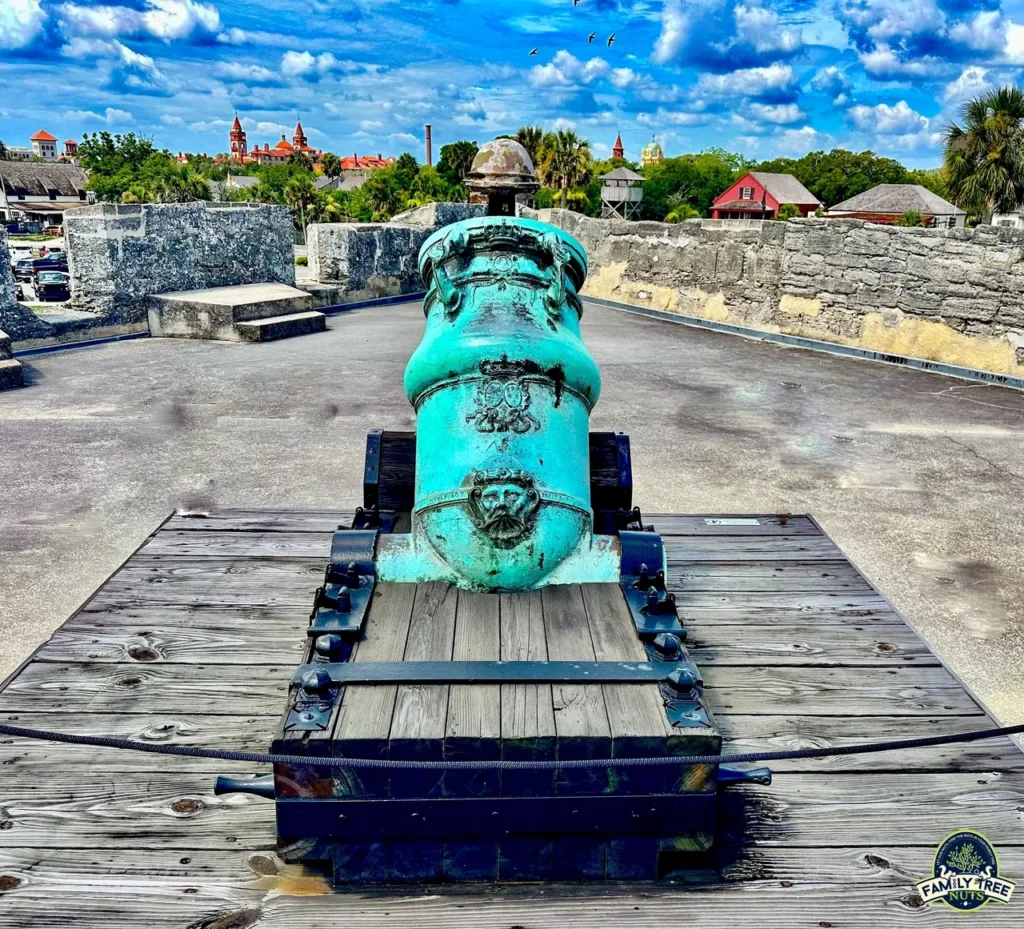
Just a few years earlier in 1562, French Explorer Jean Ribault landed at the site of modern-day Jacksonville, Florida, and in 1674, he and Huguenot settlers established Fort Caroline. The fort was a major threat to Spanish interests in the area, and within days of establishing St. Augustine, Pedro Menéndez led his Spanish troops to sack Fort Caroline, thus gaining control of Florida.
The next major event happened in 1586, when English Privateer Sir Francis Drake sacked St. Augustine, and burned the town and it’s wooden fort. The city’s importance grew throughout the 1600s when it became the port of entry for the El Camino Real, or “the King’s Highway”, which was a road through northern Florida whereby Catholic missions were established in a chain. St. Augustine was sacked a second time in 1668, when English pirate Robert Searle destroyed the city. With this second attack, the Spanish knew that they needed to spend the money to build a formidable fort to protect St. Augustine.
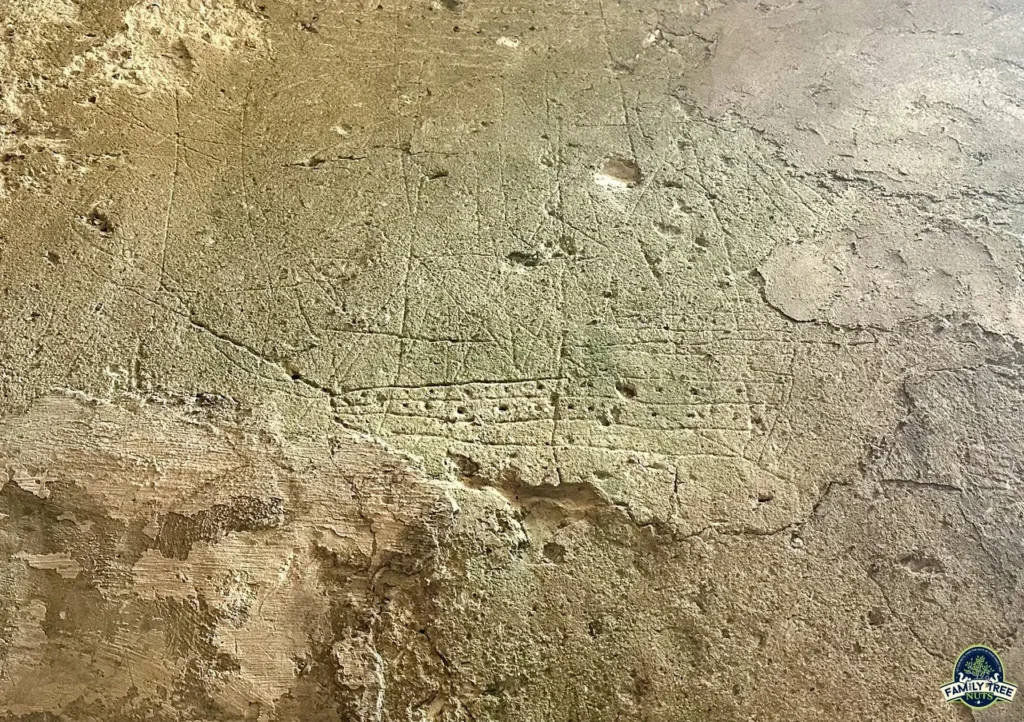
In 1672, The Castillo de San Marcos was designed and by Ignacio Daza, who died five months after construction began. The fort is made of coquina, which is a rare type of limestone made of sea shells that has been pressed and over time calcified to form a hard stone. The fort was declared to be finished in 1695, but the Spanish continued to make improvements until the mid 1700s. It is officially “North America’s oldest masonry fortification”.
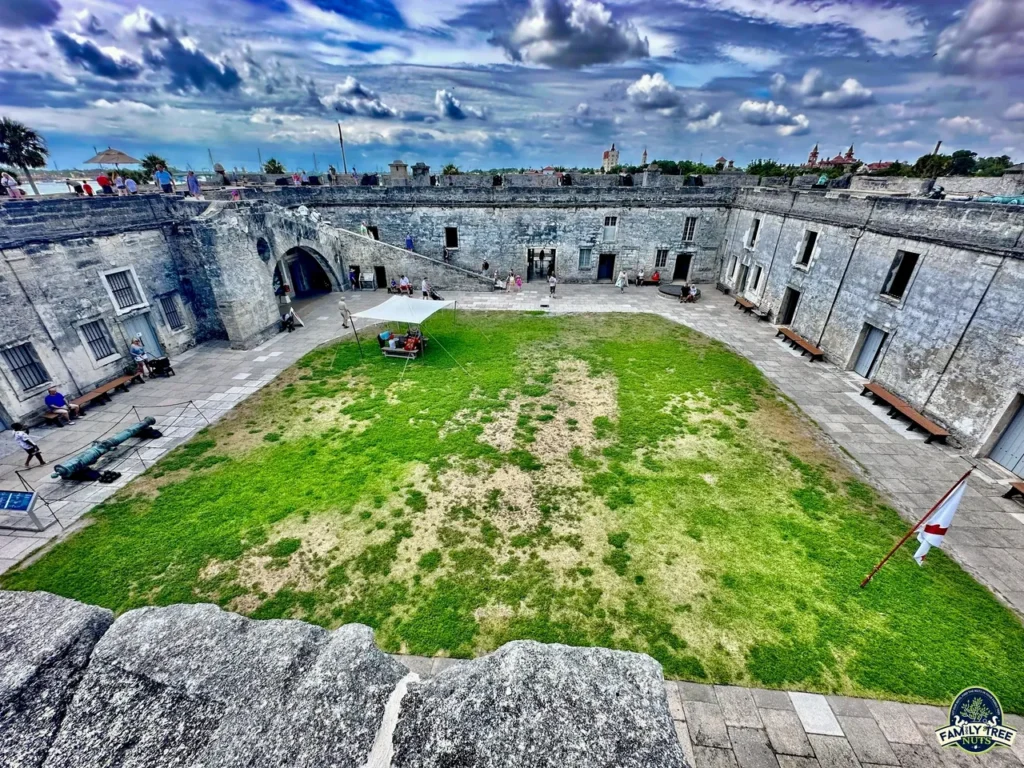
In the late 1600s the English began to move further inland form their coastal settlements and began to attack and sack several Spanish Settlements in and around Florida. In 1702, during Queen Anne’s War, Carolina Governor James Moore led troops and Indians on an attack of the Castillo. During the siege the powder room was used as a trash pit and sealed off. The pit was opened one hundred years later, and the animal bones found inspired myths that lovers were trapped inside and sealed off. Today you have to crawl on your hands and knees to enter the powder room.

An interesting story in the early years of the fort is that of Francisco Menéndez. He was enslaved in South Carolina, and he heard that the Spanish would give freedom to any escaped slave that converted to Catholicism. Menéndez escaped to St. Augustine, and by 1738 he became the Captain of the Militia. He eventually commanded the first free black settlement in North America named Fort Mosé. When most the Spaniards left Florida in 1763, he moved to Cuba and set up a new town for free blacks called San Agustín de la Nueva Florida.
In 1740, Georgia Governor James Oglethorpe laid siege to St. Augustine for about a month until Spanish reinforcements arrived from Cuba to repel the English. This was the last serious threat to the fortress. In the 1740s, Spain and Great Britain fought the War of Jenkins’ Ear all over the world, and fighting along the Georgia and Florida Coast was severe, keeping the Castillo on high alert.
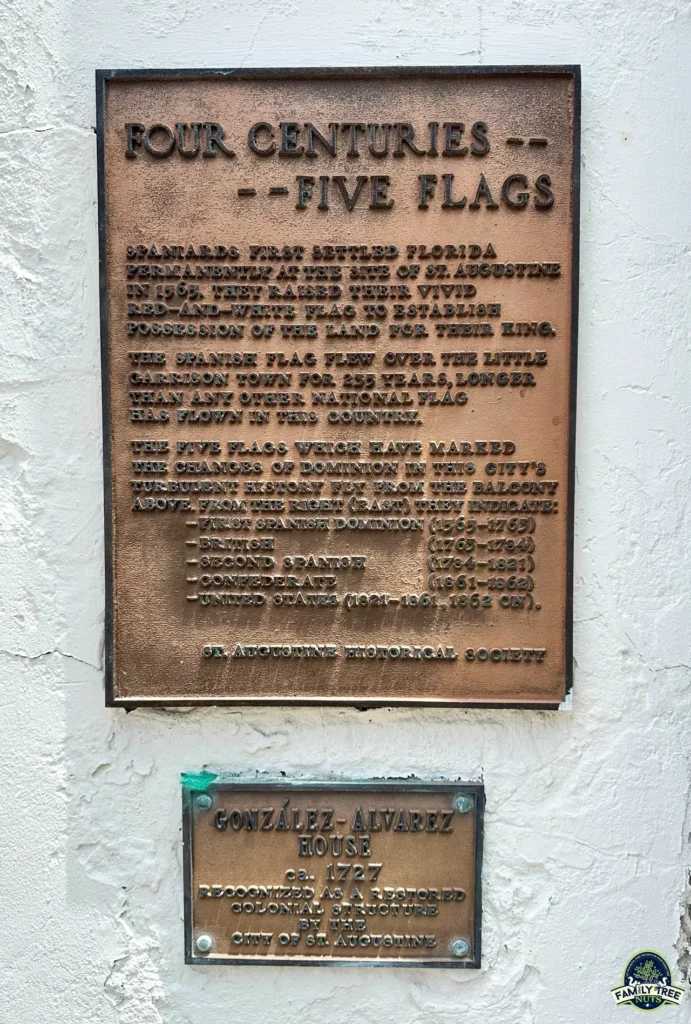
During the French and Indian War, France offered up their Louisiana Territory to Spain in exchange for their support. Upon hearing this, Great Britain attacked and conquered Havana, Cuba, and Manila, in the Philippines. When the war ended with the 1763 Treaty of Paris, Spain traded Florida to Great Britain in exchange for the return of Havana and Manila. The British took control of all of Florida and began to refer to the Castillo de San Marcos as Fort St. Mark. If you have ever been to St. Augustine, you know that it can get very hot and humid. When British Colonel Sir Frederick Haldimand was stationed here in 1769/1770, he stated that the location was “the most disagreeable of my life”. He was later the Governor of Quebec, which of course was much cooler.
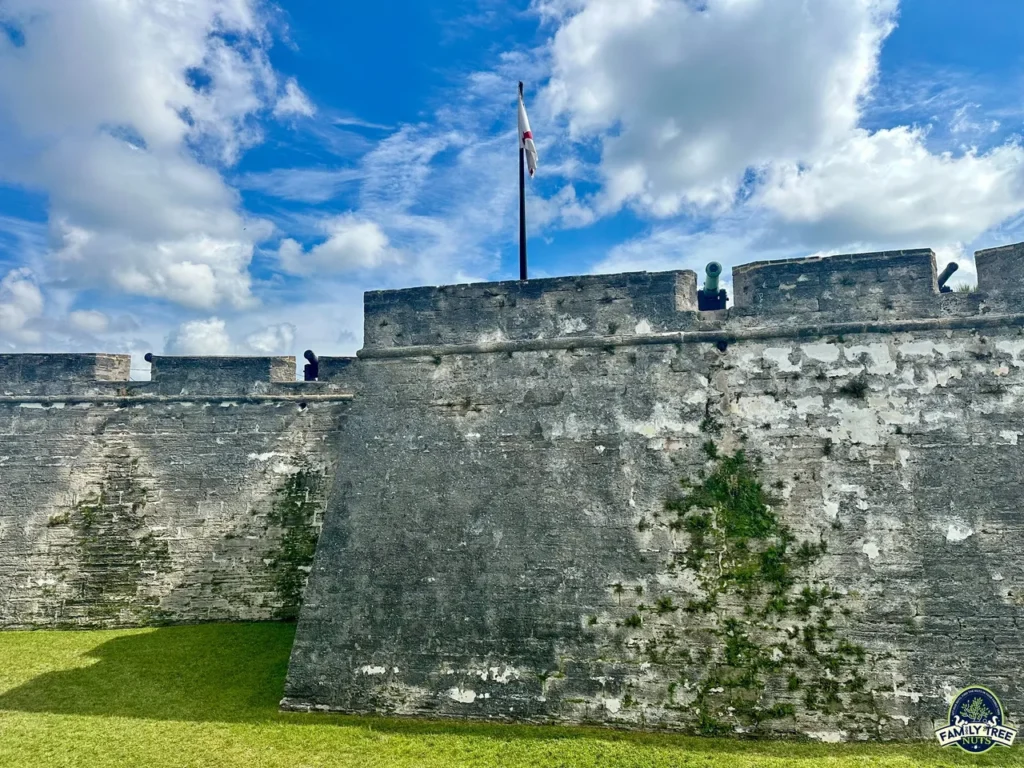
During the American Revolution, St. Augustine was a hub for loyalists that wanted to escape the persecution from the patriots. St. Mark was used as a prison for captured rebels and housed American leader Christopher Gadsden for forty-two weeks. When the war ended with the 1783 Treaty of Paris, Great Britain recognized the independence of the United States, and in a separate treaty, Great Britain traded Florida back to Spain for the Bahaman Islands. The Spanish made many improvements to St. Augustine and strengthened it’s defenses. The fort’s name was changed from St. Mark, back to Castillo de San Marcos.
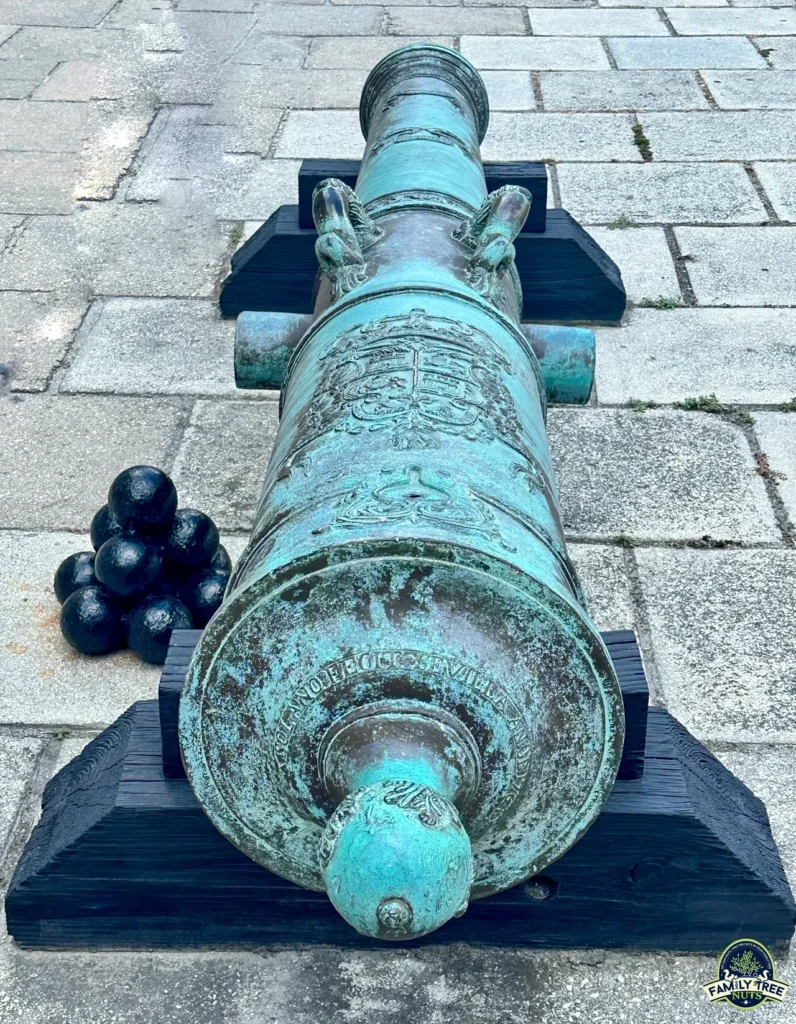
About thirty-five years later, a discrepancy began to arise as to the border of the United States and Spanish owned Texas. The dispute was settled in 1821, with the Adams-Onís Treaty, which not only settled the boundary issue, but ceded Florida to the United States. When the Americans took over the Castillo de San Marcos, they renamed it Fort Marion after the Revolutionary War hero, Francis Marion, better known as the “Swamp Fox”.
In the first few years of American control, St. Augustine shared duties with Pensacola as the capitol of Florida, until Tallahassee was declared the capital in 1824. St. Augustine was an import base of operation during the wars with the native tribes. During the Second Seminole War, the legendary Chief Osceola was held at Fort Marion for a time.
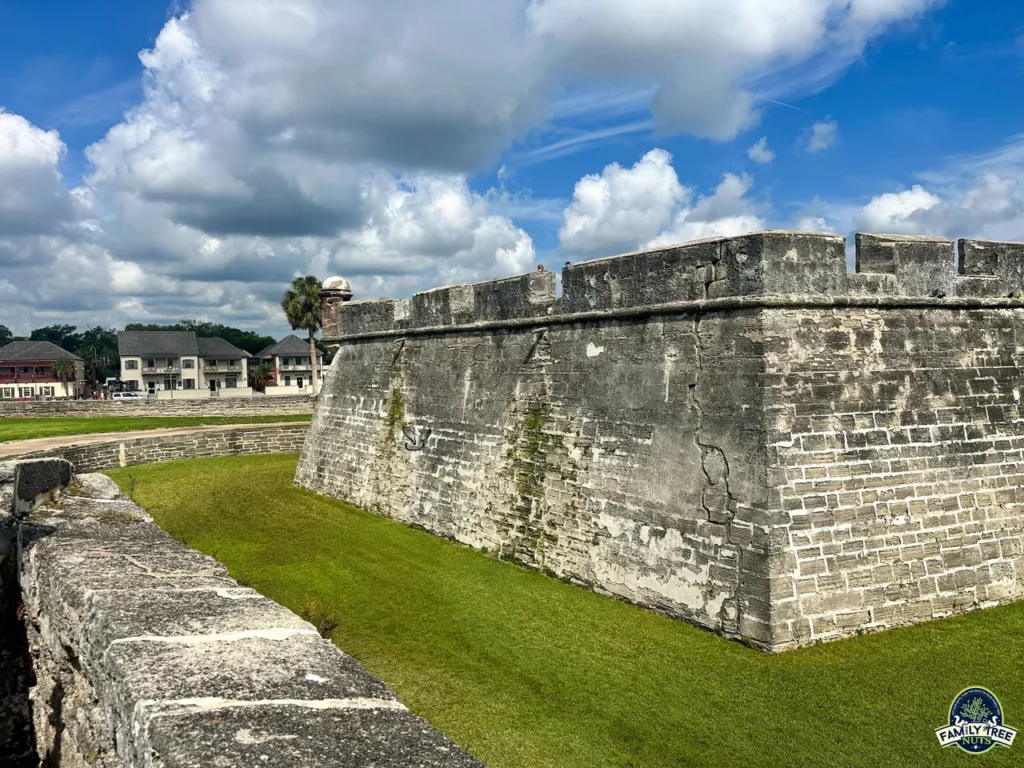
At the very beginning of the Civil War, Fort Marion was used as a supply warehouse and was manned by just one man, Sergeant Henry Douglas. In January 1861, three days before Florida seceded from the Union, men from the Florida Militia went to Fort Marion to seize the canon and munitions. Upon their arrival Sgt. Douglas did not surrender the fort until the militia signed a receipt for the inventory in the fort. The militia passed the hat and paid for Sgt. Douglas’ trip to Philadelphia. As with the rest of the war, the Confederate resources were limited, and they abandoned the fort in March of 1862. A few days later the United States took back control of the fort and maintained possession for the duration of the war.
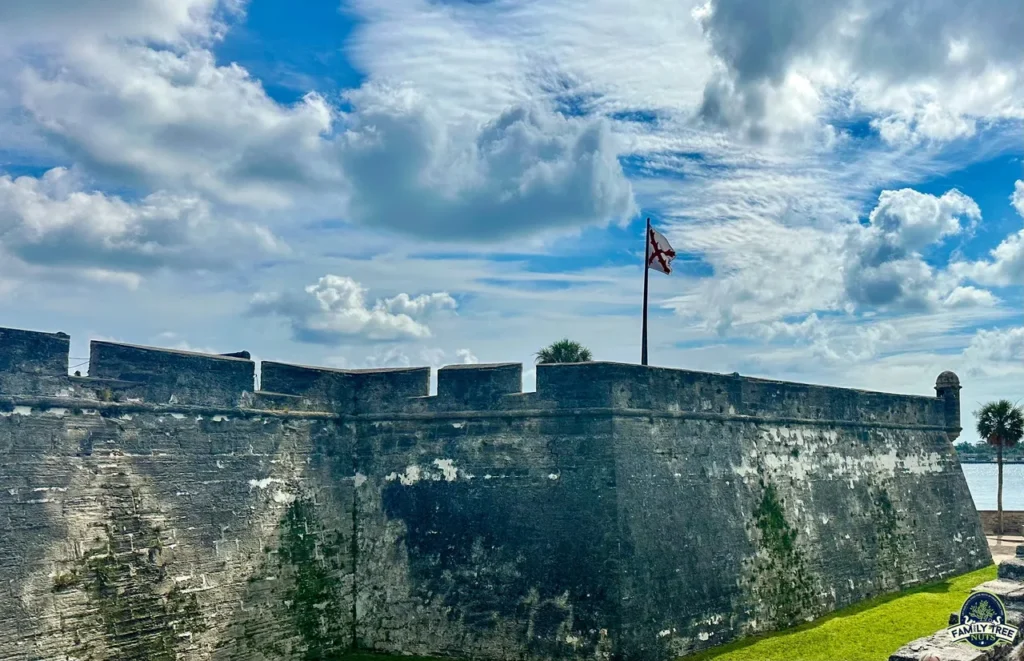
The years following the Civil War were some of the darkest days in the fort’s history. It served as a prison for many plains Indian tribes. Several of the prisoners were formed into a military company and performed duties as soldiers. Captain Richard Henry Pratt began the process of assimilation to teach the Indians to adapt to white culture. His process became the base for the Indian schools that soon popped up across the country.
The final years of Fort Marion being used as a military post was during the Spanish American War. During this time, the fort housed deserters, and following the war the fort became less practical and important. In 1924, Fort Marion was designated as a National Monument, and in 1933, it was transferred from the Department of War to the National Park Service.
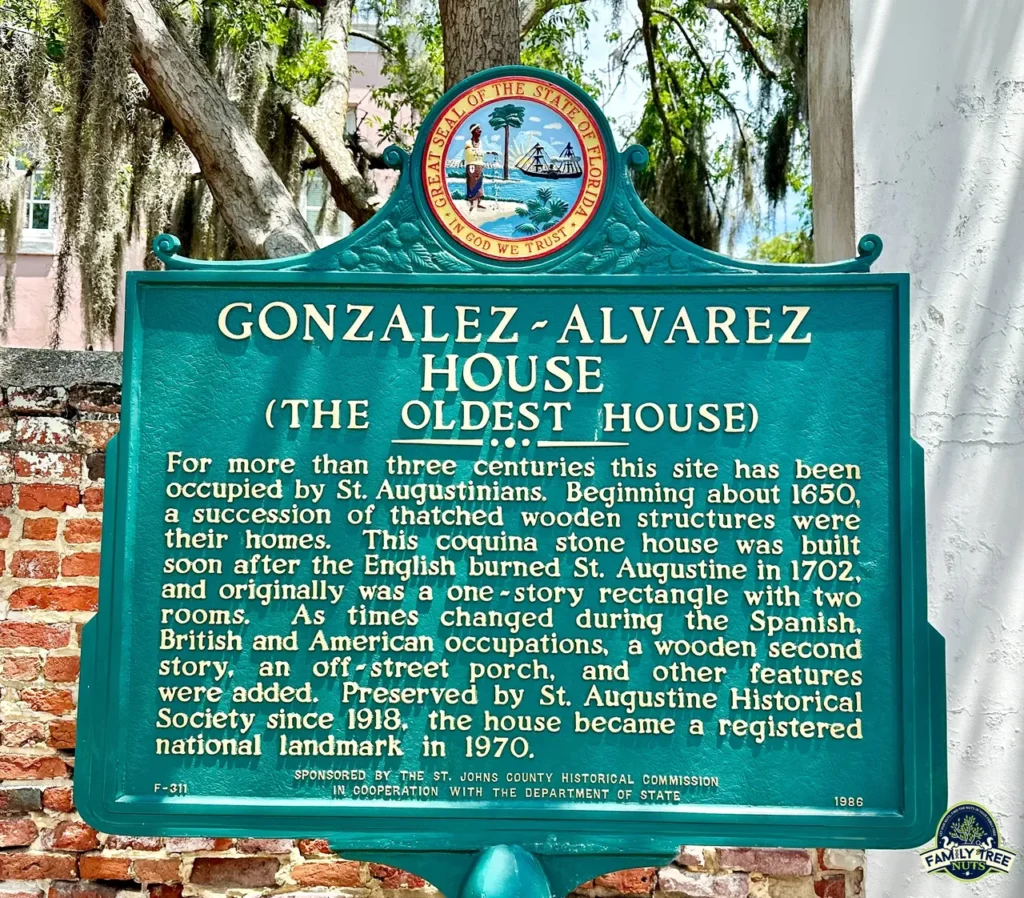
Today you can visit the fort and wander almost all over it. A favorite of many guests is the carvings of ships scratched on the plastered walls by soldiers who manned the fort over the centuries. Ships were the lifeline for the early soldier so far away from home on a mostly unexplored frontier. The site of them certainly brought much joy to them for a several reasons. A variety of ships are on display and on some of them, the soldiers etched over the flags changing them from Spanish, to British, to American flags. Another favorite site for visitors to the fort is the variety of cannons and mortars on the top deck. They are elaborately decorated and information about their manufacture and their capacities are listed on them. The largest of these cannons have a range of three miles!
So now we know some of the rich history of St. Augustine and the Castillo de San Marcos, and their impact on American History. What do you think? Did you know that this historical treasure existed? What are your thoughts about the major events that took place here? Have you ever been here, or do you now plan to visit? We’d love to hear what you have to say in the comments below.
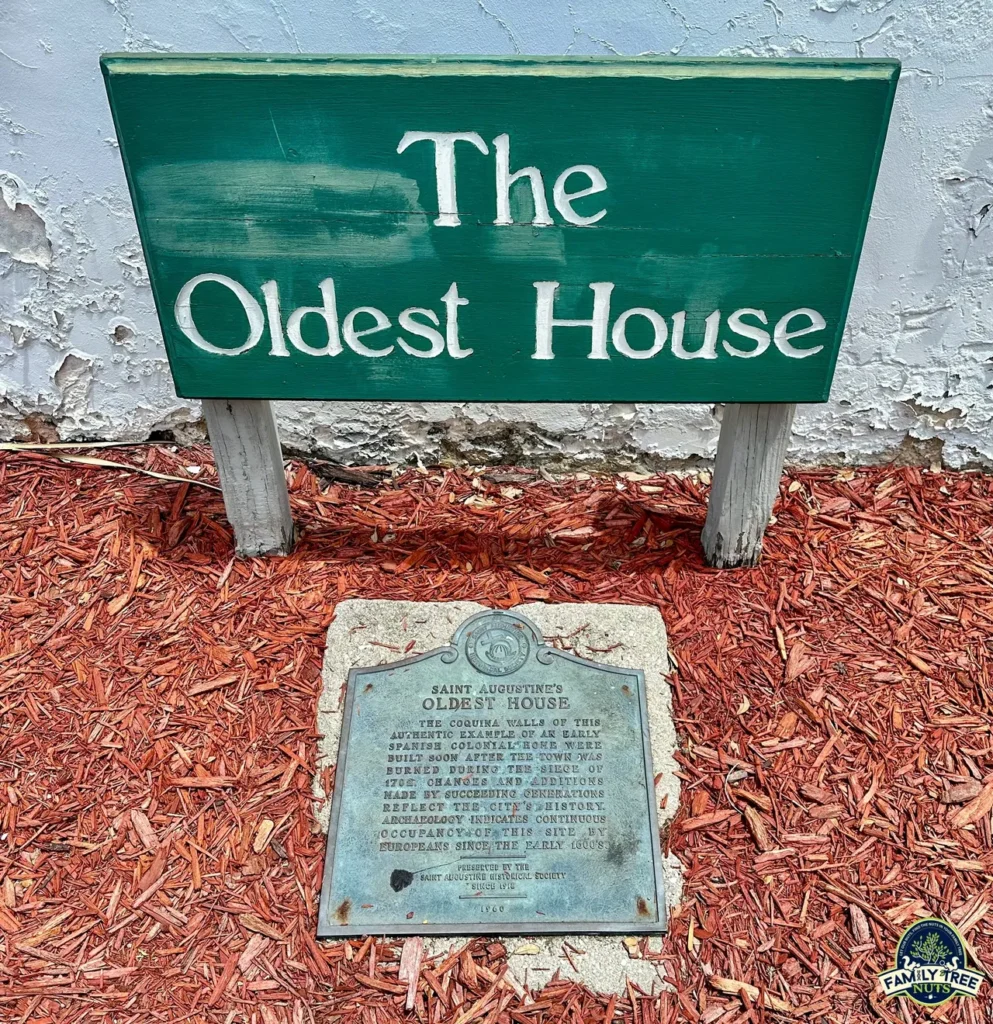
Also, while you are in St. Augustine, be sure to visit the other historical locations that it has to offer. Now, the city has history everywhere you look, but I wanted to tell you about a few of my favorite. Be sure to check out the St. Francis Barracks which began as part of a friary, and later housed Spanish, British and American troops. Today it is the headquarters for the Florida National Guard.
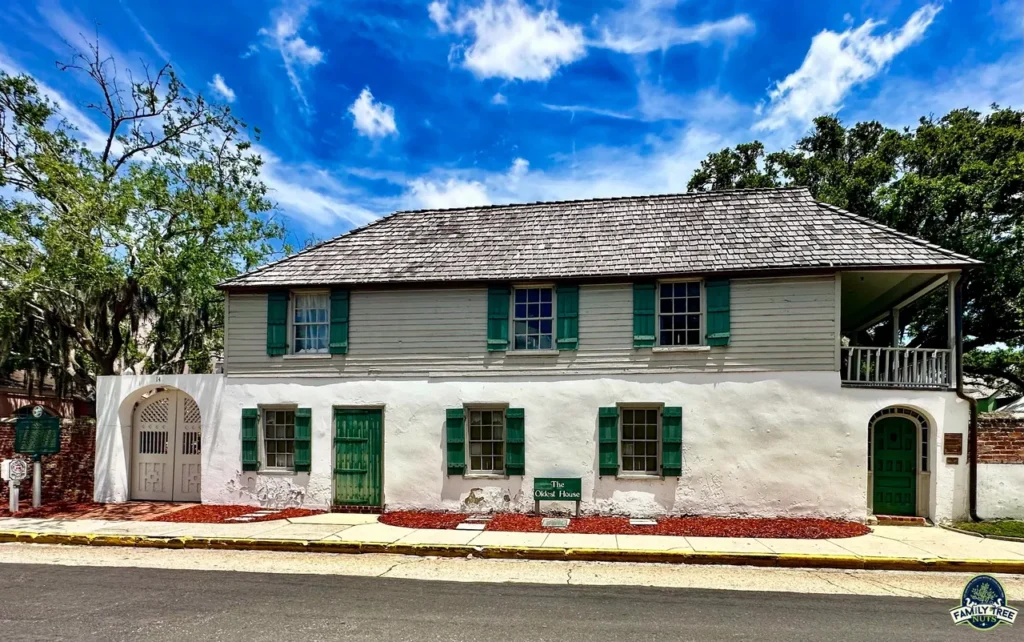
Another historic place to visit is the “Oldest House”, also known as the Gonzalez-Alvarez House. The British burned St. Augustine in 1702, and this house was built shortly thereafter, possibly in 1723. Archaeology proves that this area has been continually occupied since the early 1600s. Today, a wonderful museum is housed here. At one time, this house was thought to be the oldest in the entire United States, but that title has now been given to the De Vargas Street House, in Santa Fe, New Mexico.
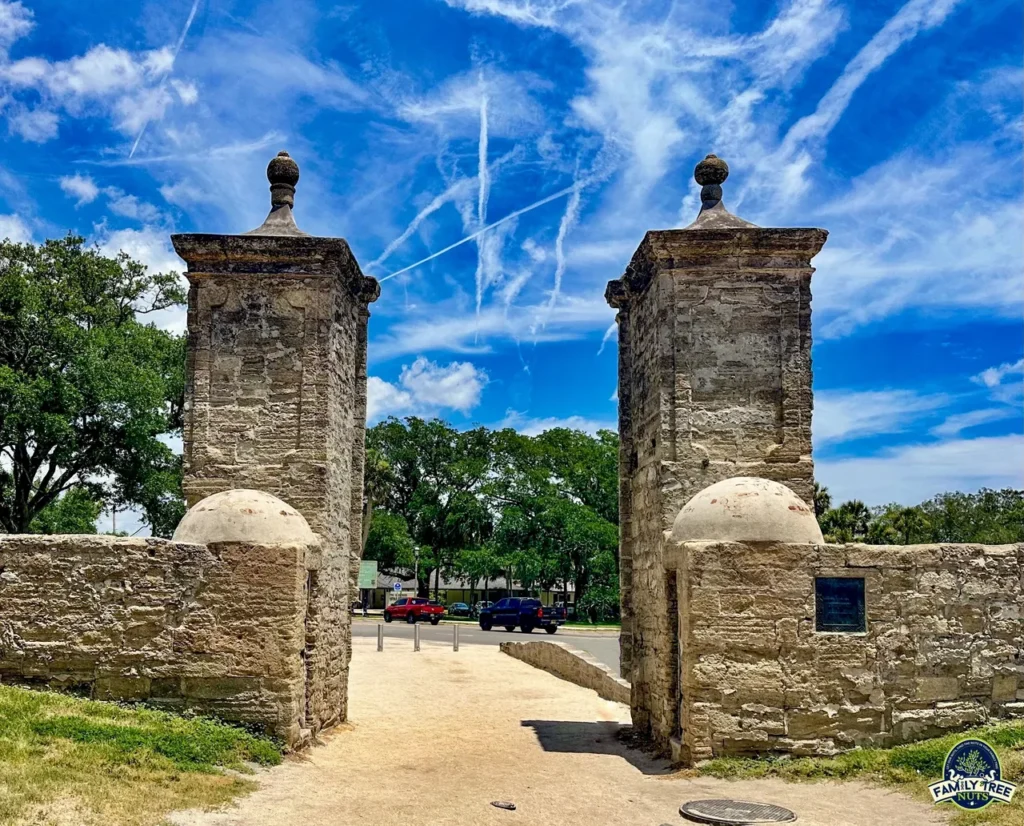
You will also want to see the old city gates that were first established in 1739, and in 1808, coquina pillars were built by the Spanish to keep out encroaching Americans. Lastly, be sure to check out the oldest wooden school house in the United States that has been standing since 1716. The key word here is “wooden”, and this school should not be confused with the oldest still standing schoolhouse in the United States, which was built twenty years earlier in 1696, in Staten Island, New York.
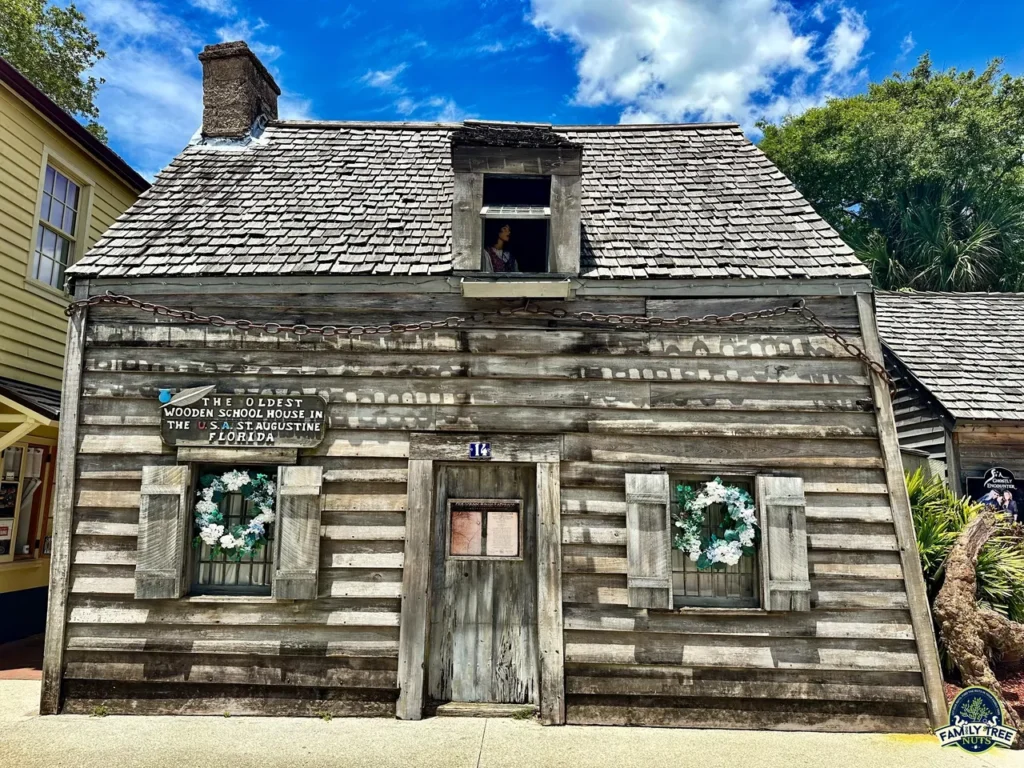
Like so many other things in life, if you are going to study American history, it’s best to start with the beginning. We are proud to share these American first stories with all of you. Be sure to see the video form here below.
-Col. Russ Carson, Jr., Founder, Family Tree Nuts
